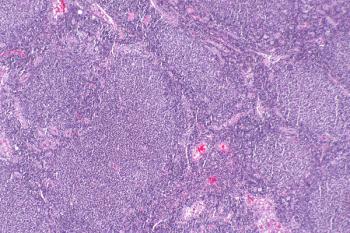
Food-Insecure Young Adults More Likely to Be Diagnosed With Migraine
A recent study sought to determine if there was an association between food insecurity, or the fear that your food will run out before you have enough money to purchase more, and migraine, which commonly affects 1 in 6 individuals, among young adults in the United States.
A recent study sought to determine if there was an association between food insecurity, or the fear that your food will run out before you have enough money to purchase more, and migraine, which commonly affects 1 in 6 individuals, among young adults in the United States.
“Young adulthood represents an important period distinct from adolescence and older adulthood, when economic and educational transitions may increase risk for food insecurity,” wrote the authors.
The researchers looked at cross-sectional, nationally representative data of young adults, aged 24 to 32, in the United States from National Longitudinal Study of Adolescent to Adults Health. Food insecurity was based on self-reported answers to the question, “in the past 12 months, was there a time when (you/your household were/was) worried whether food would run out before you would get money to buy more?” According to researchers, the question had a 93% sensitivity and 85% specificity. Similarly, migraine diagnosis was based on self-reported answers to “has a doctor, nurse, or other healthcare professional ever told you that you have migraine headaches?”
The sample size consisted of 14,786 young adults with a mean age of 28.1 years. About half were female, and 65.5% were non-Hispanic whites. The study found that overall, 11% of young adults were food insecure. Food insecurity was reported more frequently among individuals with a greater mean household size (2.5 vs 2.1; P <.001), those who smoked (46.3 vs 28.1; P <.001), and those who recently used public assistance (53.5 VS 20.7; P <.001).
The prevalence of migraine was also higher among those who were food insecure compared with food secure young adults (23% vs 12.6%; P <.001). Food-insecure young adults also had greater odds of migraine in unadjusted (odds ratio [OR], 2.00; 95% CI, 1.68-2.38; P < .001) and adjusted (adjusted OR, 1.58; 95% CI, 1.30-1.95; P < .001) models.
“We found that food insecurity was associated with migraine in young adulthood. Few studies have examined the association between food insecurity and neurologic outcomes,” wrote the authors.
The researchers note that physicians should consider screening for food insecurity in patients with migraine, and potentially refer those who are determined to be food insecure to assistance programs, such as the Supplemental Nutrition Assistance Program (formerly the Food Stamp Program) when appropriate.
“Food insecurity may lead directly to missed meals and indirectly to psychological stress, depression, and poor sleep, which are common precipitants of migraine. Conversely, frequent, chronic migraine may contribute to food insecurity by preventing attendance at work, lower productivity, and/or loss of employment and may also result in a reduced ability to perform house-hold activities such as shopping and cooking,” concluded the authors.
Reference
Nagata J, Weiser S, Gooding H, et al. Association between food insecurity and migraine among US young adults [published online June 24, 2019]. JAMA Neurol. doi: 10.1001/jamaneurol.2019.1663.
Newsletter
Stay ahead of policy, cost, and value—subscribe to AJMC for expert insights at the intersection of clinical care and health economics.














































